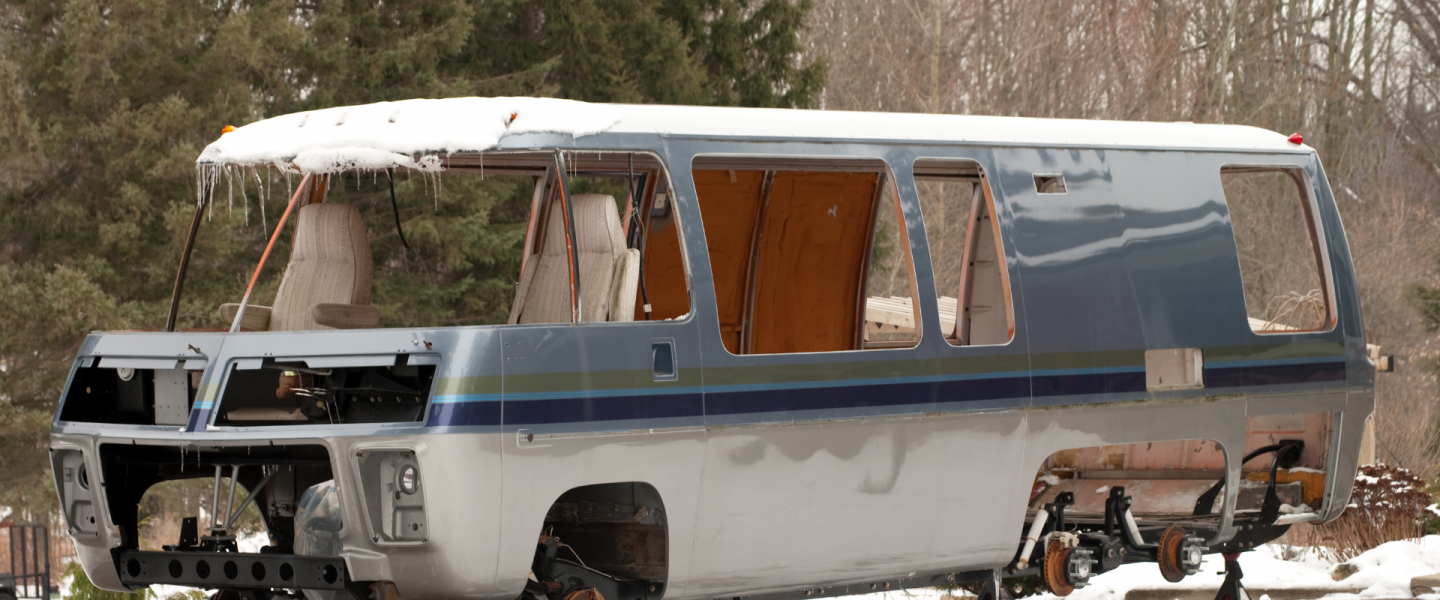When you’ve put a roof over your head for the night, the last thing you probably want to think about is where to find the hole in your RV’s underbelly-but it happens all the time. Whether you’ve killed a nail in its paneling, flipped over a rock and punctured your roof, or just parked in the wrong place and the ground shifted, RVs are susceptible to damage, and they can start to show wear and tear over time, causing its underbelly to sag. These sagging areas under the bottom of the vehicle can easily be fixed, but finding the leak can be a real challenge.
If you’ve noticed your RV’s underbelly is a bit sagging, don’t panic. It’s normal, and you’ll likely simply need to repair it. If you do, it helps to understand how it is constructed. Most of them are built on a frame that’s made up of metal, and on top of that is a plastic shell. A felt layer exists between the metal and the plastic shell. This layer is flexible and can bend upwards.
What Is RV’s Sagging Underbelly?
Whether you’re an RV newbie or just learning about them for the first time, you might not understand what the “Sagging Underbelly” is. The term refers to the underbellies of RVs. This underside is often referred to as “the undercarriage.” It’s where all the essential components are located, including the automotive, plumbing, electrical, and mechanical systems. It is a collection of individual components housed under the vehicle and, in many cases, extends out horizontally.
How to Tell if Your RV’s Underbelly is Sagging
Whenever you’re RVing or traveling in another type of trailer, you do not want to return home to a flat, sagging underbelly. This can happen after years of use. The weight from the trailer will compress the rubber membrane between the metal springs and the frame of your RV. When that happens, you can easily feel or hear a crunch. Once that happens, the rubber will rupture, and the RV frame will flex.
If you’ve driven past your RV recently, you may have noticed that the underbelly is sagging a bit. There are a few reasons why their underbelly could be sagging, including overloading, water damage, and more. If your RV is obviously sagging, there are a few things you can do to get it back up on its feet.
Steps You Must Try How to Repair a Sagging RV Underbelly
Check the manufacturer’s manual
RV repair can be a big job (and expensive). But if you’ve recently invested in a new rig or inherited one, you probably have some ideas about what steps you’ll take to get it repaired. Perhaps you’ll take it on yourself, seek the help of a repair shop, or look into using an RV service center.
Look for signs of pest infestation
When inspecting your RV’s underbelly for sagging issues, be thorough in checking for signs of pests or infestations. Look out for droppings, nesting materials, chewed items, holes, or entry points that may indicate the presence of rodents, insects, or other unwanted critters. Additionally, pay attention to any musty or unpleasant odors, as they could indicate pest activity or the presence of waste or nesting materials. If you spot any pests in the underbelly area or inside the RV, it’s crucial to take action to address the infestation and prevent further damage. In such cases, calling in Pest Control Experts may be necessary.
Clean the RV
RVing is a fantastic way to travel the country with friends or your family, but it’s also a great way to work those muscles. But before you hit the road, keep it in tip-top shape. Go through a detailed checklist and inspect every aspect of the RV from top to bottom.
Sand down any rust
Before you can repair a sagging RV underbelly, you need to sand down any rust to prevent it from spreading. Check and make sure the underside of your RV is dry and clean. Use 220-grit sandpaper and sand down any rusty spots and rust around the underside.
Seal any holes or cracks
When you’re camping in the wilderness, you have a chance to explore the wilderness safely and soundly. However, if your RV underbelly is leaking, it can spell disaster for your camping experience. Underbelly damage can occur because of wear and tear, so you need to be extra careful when you’re on the road.
When any RV is built, its design rests on the strength and durability of its underbelly. The underbelly is metal panels formed beneath the vehicle, which are quite heavy. These panels need to be strong to handle the weight and storage of an RV. A sagging underbelly will compromise the vehicle’s strength and cause it to sink, possibly leading to a serious accident. Unfortunately, it cannot be fixed by a simple repair. It requires extensive welding and drilling, so it’s important to have the RV repaired by a professional.
If you’ve ever seen the underbelly of your RV sagging, you know that it’s not something you want. But don’t worry; there are some easy steps to follow that’ll help you fix the problem.

